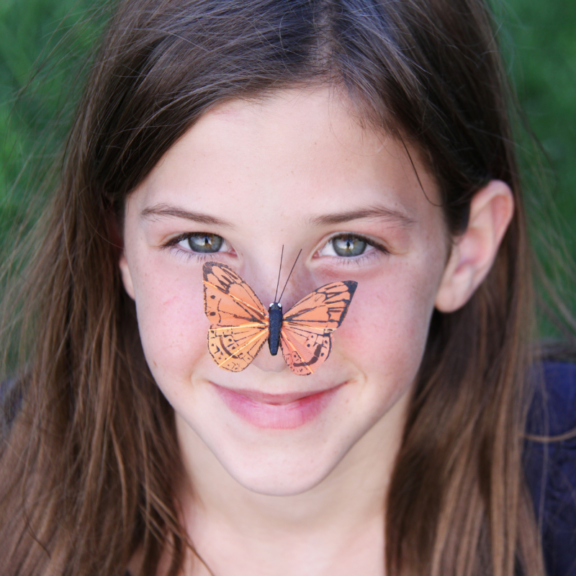
Self-Injury Awareness Day
The Story of the Butterfly
National Self-Injury Awareness Day is honored on March 1 each year. Self-injury has increased among US youth due to increased feelings of isolation due to lockdowns during the pandemic. Learn more about the Butterfly Project and how you can show support and spread awareness.
What are Self-Injury and Self-Injury Awareness?
The first day in March is Self-Injury Awareness Day. Today, people wear orange or draw a butterfly on their wrists to spread awareness, educate, and bring hope to those suffering from self-harm. The orange ribbon represents hope to end a misread problem and promotes the eradication of common misconceptions about those suffering from this behavior.
The Butterfly Project
The act of drawing butterflies comes from the Butterfly Project, a social movement designed to support sufferers on their journey toward healing. Simply draw a butterfly on the part of your body you feel compelled to self-harm and name it after a friend, family member, or loved one. This technique is a positive alternative to other harm-reduction strategies, such as snapping a rubber band. Those who do not self-harm may also participate in the Butterfly Project to show support and spread awareness.
The rules are simple:
- When you feel the urge to self-harm, draw a butterfly on your arm, hand, or location that you are compelled to hurt.
- Name the butterfly after a loved one or supporter.
- Let the butterfly fade naturally, no scrubbing it off.
- If you self-harm before the butterfly is gone, the butterfly “dies,” so the goal is to help it live.
- Another person may draw them on you. These butterflies are extra special and should be handled with extra care.
- If you don’t self-harm, draw a butterfly on yourself to show support. In this case, name the butterfly after the person you are supporting.
NewPath supports those who need us most
Across more than 40 countries, about 17% of the population (almost 2 million people) will self-harm at some point during their lifetime. The average age of the first incident is 12-14 years old. On average, only about half of those that self-harm seeks help, mainly turning to loved ones rather than licensed professionals. Someone you know and love could be suffering and may one day turn to you for help.
NewPath’s staff wore orange and drew butterflies in honor of the national holiday to spread awareness and support all those who have suffered or continue to suffer from self-injury disorders.
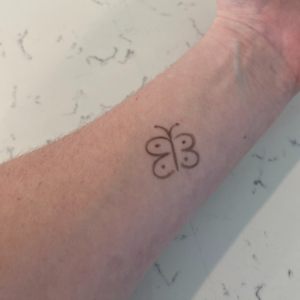
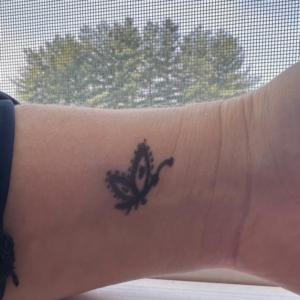
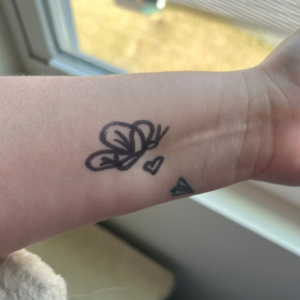
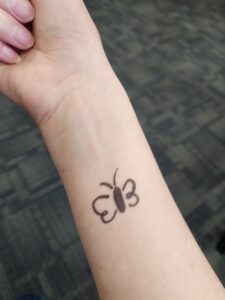


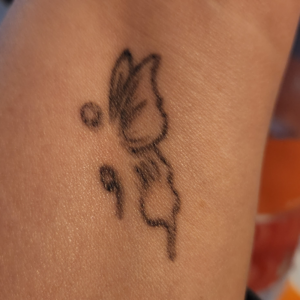
“I got a butterfly tattoo in October 2015 in support of my daughter who was struggling with depression and self-harm. It includes the semicolon to represent the idea that the author could have finished their sentence but decided to continue because their story isn’t finished yet!” – Melanie, NewPath Team Member
There is Hope. There is Help.
SUPPORT AT HOME
This may be a sensitive subject, but there are ways you, as a parent, can help your child at home. Mental Health America recommends these tips on what parents should and shouldn’t do to support their children.
What to Do:
- Be patient. Healing takes time
- Learn more about underlying causes associated with self-injury
- Address the issue as soon as possible; waiting could make things worse
- Validate your child’s feelings, not the behavior
- Speak to your child using calm, reassuring tones
- Check-in on how your child is doing regularly
- Ask them what they need for support to stop self-harming
- Give praise for any positive change or progress
- Take care of yourself as well
- Hold on to hope, recovery may take time, but things will get better
What to Avoid:
- Don’t think of ongoing or relapsed self-injury as failures or attention-seeking behavior
- Don’t respond in harsh or hurtful ways such as screaming, threats, insults, or punishments
- Don’t fight for power or control of the situation
- Don’t rationalize the behavior by thinking of self-injury as a phase that will go away with time
- Don’t minimize the seriousness of the practice to your child
- Don’t isolate your child
- Don’t focus only on the act of self-injury and not the underlying issues causing the behavior
PROFESSIONAL SUPPORT
Self-injury is a behavior resulting from underlying mental health concerns and not a phase related to a child’s age. Even though support from friends and family is essential to recovery, a licensed professional’s help is just as crucial. To learn more about our Outpatient Mental Health services and all the services in our continuum of care, submit the form below.
Contact Us
Contact
"*" indicates required fields
